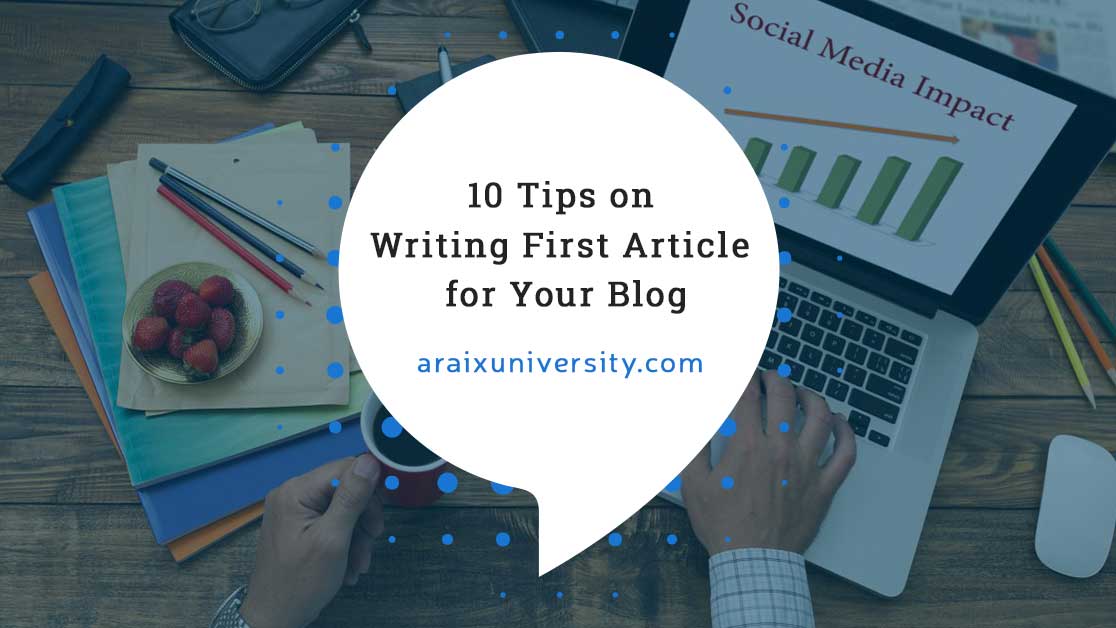I hope you’re excited because this is the crucial step toward having a live website brimming with captivating content that your readers will absolutely love. Now, it’s time to sit down and craft up to five remarkable articles to kick-start your site. These tips on writing your first article will help you develop impeccable content for your blog.
Five is a splendid number to start with. Begin by creating an article for your homepage, and then proceed to generate four additional articles, ideally divided into categories. For instance, if your website focuses on SEO Tools reviews categorized by the software provider, you might want to write two reviews for SEMRush and two for Serpstat.
Remember, knowledge is power. Content stands as one of the most critical elements of a website, and one recurring issue I often see with new affiliates is the presence of subpar content. Here are some fundamental guidelines to help you construct your articles effectively:

Aim for 1000+ Words
Longer content tends to fare better, especially for incorporating long-tail keywords. If all other factors are equal, Google is likely to prefer a 1000-word article over an 800-word one. As a general rule, strive for 800–1000 words per article.
Utilize Subheadings
Organize your content using subheadings and create distinct sections for each topic. This approach makes it easier for readers to locate the information they seek, providing a more user-friendly experience.
Embrace Short Paragraphs
Avoid presenting readers with long blocks of text, as they are generally unappealing. Ideally, keep your paragraphs concise, consisting of no more than three to four lines.
Highlight Keywords and Phrases
To draw the reader’s attention to specific topics, use bold formatting to emphasize relevant aspects of the text. Even if readers are skimming the content, these highlighted phrases will catch their eye.
Include Call-to-Action when appropriate
One common mistake I observe is content creators neglecting to provide affiliate links when suitable. For instance, if you’re promoting kids’ toys and have just finished describing how a particular toy made your child’s day and is constantly the topic of conversation, be sure to include a link in that section, encouraging readers to click through. While it’s important not to overdo the call-to-action approach, never force readers to search for links to click. Make them easily accessible within the content.
Incorporate Lists
Top X lists or bullet point lists are highly effective. They are concise, to the point, and grab readers’ attention. Additionally, lists help break down complex topics into manageable sections.
Assume the Reader Is Inexperienced
Always assume that the reader lacks prior knowledge and requires clear explanations. For instance, if you’re discussing a WordPress Site, don’t assume readers already understand what Web Hosting is. Either explain it in that article or provide a link to a more detailed piece on “What Is Web Hosting?”
Anticipate Questions
Your article might trigger questions from readers, or they might enter the article with existing inquiries. Anticipate these questions and use subheadings to provide comprehensive answers.
Opt for Short Sentences
I must admit that I struggle with this myself, often failing to practice what I preach in this regard. However, it’s crucial to keep your sentences short and concise. Avoid boring or losing the reader’s interest at any point.
Personalize Your Content
Whenever possible, infuse your content with a personal touch right from the beginning. Connecting with your readers on a personal level is a powerful way to establish rapport and build trust. When they feel a genuine human connection, they are more likely to engage with your content and return for more.
Start by sharing your own experiences, anecdotes, or perspectives related to the topic at hand. By weaving in personal stories, you create a relatable and authentic voice that resonates with your audience. Whether it’s a humorous anecdote about a memorable poker game or a heartfelt reflection on the impact of a particular toy on your family, these personal touches breathe life into your writing and make it more captivating.
Phew! Now that the list is complete, it’s time to GET TO WRITING. Craft those articles, publish them on WordPress—we have a live site!


0 Comments